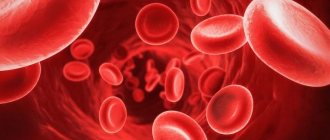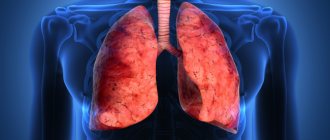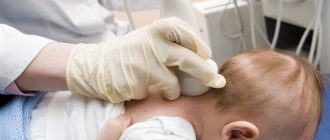Properties of the pathogen
Based on their ability to cause diseases, this type of bacteria is divided into pathogenic and opportunistic forms. The former enter the body from outside and are the causative agents of escherichiosis, an infectious disease whose leading symptom is diarrhea. One of the common pathogenic bacteria of this form is hemolytic Escherichia coli. The hemolyzing bacillus is considered the most dangerous, capable of causing death in pediatric patients.
Opportunistic pathogens are part of the normal microflora of the body and are mostly localized in the large intestine. Under favorable factors (for example, a decrease in immunological reactivity), they lead to the development of endogenous infection:
- certain strains of E. coli initiate the development of meningitis;
- others - sepsis;
- third (uropathogenic) – are the cause of urethritis.
How the infection is transmitted
Pathogenic species of such microorganisms can provoke infectious and inflammatory diseases of the gastrointestinal tract, urinary and reproductive systems in female and male patients.
Various groups of such microorganisms, unable to cause the development of disease, live in the human intestine, representing part of the natural microflora of the body. Escherichia coli E. coli is detected in the urine of a healthy person in the following cases:
- If urine is collected incorrectly.
- With non-sterile containers for analysis.
- In case of injury to the organs of the genitourinary system.
E. coli bacteria in such cases, when the immune system is weakened, can cause diseases in the human body. Infection with E. coli usually occurs through non-sexual contact.
Infection with this microbe is possible only through the transfer of the strain from one organ to another. All infections affecting the gastrointestinal tract caused by this microorganism are transmitted through contaminated water, food or contact. The mechanism of infection is fecal-oral.
Causes and factors of appearance in urine
Escherichia coli may appear in the urine due to the following conditions:
- inflammatory diseases of the urinary system (kidneys, ureters, bladder, urethra);
- in the presence of chronically ongoing processes in pregnant women;
- lack of proper hygienic care of the external genitalia;
- a risk factor is also an overly active sexual life with non-compliance with safety precautions;
- non-sterile container for collecting samples.
Not all patients develop an inflammatory process in the presence of E.coli. This is due to the work of powerful protective mechanisms in the form of a constant change of epithelium, chemicals produced by cells, as well as the physiologically determined process of urination, in which bacteria are naturally removed from the urinary tract. If the protective functions fail, E. coli is capable of rapid colonization and reproduction, which causes the development of a pathological process.
Predisposing factors include:
- decrease in urine pH values;
- reduction in the process of urination and the presence of residual urine;
- the presence of other foci of infection;
- non-compliance with the rules of personal hygiene, for girls - improper washing (the direction of water and washing movements should always be towards the anus, and not vice versa);
- decreased immune properties and hormonal levels in various conditions (pregnancy, diabetes).
In women, E. coli is detected several times more often than in men, which is due to the anatomical features of the structure and the greater likelihood of the pathogen entering the genitourinary tract from the terminal part of the digestive tract.
E. coli in urine in women treatment
E. coli urinary tract infections are very common, especially in women. Approximately 50% of adult women report having some episodes of urinary tract infection (IVU) during their lifetime. UTIs include bladder infections (CYSTITIS) and more serious kidney infections (PIELONEFRITI), but the most common infections are cystitis, which usually heals with a course of antibiotics. In addition, young women also experience the presence of E. coli bacteria (indicated as urine positive) in a urine sample from an asymptomatic patient, referred to as “asymptomatic bacteriuria.” This finding does not necessarily imply the prescription of an antibiotic unless in special conditions, such as in pregnant women. We will focus primarily on acute cystitis presenting in healthy women.
What is meant by urinary tract infections? Bacteria do not usually live in the urinary tract, which includes the kidneys (which filter urine), the bladder (which collects urine), and the urethra (the passageway for excreting urine). When bacteria enter the urinary tract and begin to multiply, they can cause IVU. The vast majority of UTIs are bladder infections.
How does E. coli appear in urine? E. coli in urine mainly affects women. This is believed to be due mainly to the proximity of the urethral opening to the anus and the shorter length of the urethra. Most UTIs are due to the bacteria Escherichia Coli (E. COLI), which is one of the most common germs in feces. Fecal contamination can result in the passage of a microorganism such as E. COLI into the urethra. These bacteria then travel to the bladder (and sometimes back to the kidney), leading to infection. Of course, E. COLI has functions that facilitate IVU, such as the ability to adhere to superficial cells of the urethra and bladder.
Escherichia coli in urine in women
What are the risk factors for developing E. coli in urine? The entry of bacteria into the urethra can be caused by numerous factors, particularly factors related to sexual activity. The use of spermicides, especially in connection with the diaphragm, appears to increase the risk of developing IVS in women. Some women are susceptible to recurrent UTIs. Factors that may predispose young women to recurrent episodes of IVU include: • sexual activity • spermicide use • genetic factors • new sexual partner Healthy men develop IVU less frequently than women. Men, women, and children with other health problems may undergo IVU. Certain clinical conditions can sometimes lead to UTIs that are more serious than just cystitis. These factors include: an indwelling bladder catheter, recent urological maneuver on the urinary tract, anatomical abnormalities of the urinary tract, neurogenic bladder (paralysis of the bladder due to neurological changes), pregnancy, diabetes, age over 65 years, and the presence of urinary obstruction. ways.
What are the symptoms of E. coli in women? Typical symptoms of acute cystitis are: • Frequent urination • Pain or burning during urination • Blood in the urine • Discomfort in the middle part of the lower abdomen (suprapubic pain) Burning during urination is a common disorder even in patients with vaginitis (inflammation of the vagina) or urethritis (inflammation of the urethra). The presence of blood in the urine is common in cystitis, but not in the other two conditions. Vaginal discharge, foul odor, itching, or pain during intercourse are typical features of vaginitis. You should think about urethritis if the patient has a new sexual partner, a partner with urethritis, or gradual development of urinary symptoms over 6-7 days (usually in the case of acute cystitis, symptoms become important in 1-2 days). If a patient has pyelonephritis (kidney infection), fever is almost always present. Pyelonephritis can also cause pain on the affected side, nausea, and vomiting. Frequent urination, pain or burning during urination and pain above the pubis often occur in cases of pyelonephritis. It is important to remember that the presence of bacteria in the urine in the absence of symptoms (asymptomatic bacteriuria) is not considered an IVU and does not always require treatment.
How is IDU diagnosed? Simple cystitis can often be diagnosed elusively, relying solely on symptoms. This is especially true if a woman has frequent IVS and can easily recognize the symptoms. However, most patients, especially with the first episode, contact their doctor. The doctor will examine the patient and ask if he has a fever or flank pain, which indicates pyelonephritis. If symptoms suggest vaginitis or urethritis, gynecological or urological examination and appropriate cultures are necessary. One way to differentiate between IVU and vaginitis is to examine the urine using a microscope to look for white blood cells. The urine usually has these cells in the case of IVU, but not in vaginitis. The search for bacteria in the urine is done using urine culture. To perform a urine test, the patient must collect a small amount of urine collected in a special sterile container during the mid-voiding phase (midstream), when the urine flow is well shaped, without interrupting urination. The sample collected in this way (10-20 cm3) should be immediately transported to the laboratory and, if possible, cooled in a thermal container. In fact, if urine is left at room temperature for a long time, the number of microbes present multiplies and the test result is no longer reliable.
What is the treatment for IVS? In healthy young women with simple cystitis, the usual treatment is three days of antibiotics. The most common medications are trimethoprim-sulfamethoxazole (Bactrim), ciprofloxacin (Ciproxin), or levofloxacin (Levoxacin). Leading experts agree that trimethoprim-sulfamethoxazole is the drug of choice for cystitis unless resistance to E. COLI in the local population is very high, or if the patient is allergic, suffers from favism, or is pregnant. Ciprofloxacin (Ciproxin) and levofloxacin (Levoxacin) are drugs that should not be given to pregnant or breastfeeding women. Some antibiotics, such as nitroformatoin (Furandantin), should be given for 5 to 7 days. Symptoms usually resolve within one to three days. Some doctors recommend increasing fluid intake to help get rid of bacteria from the bladder. Others, however, believe that increasing fluid in the body dilutes the concentration of the antibiotic in the bladder, making the drug less effective. No studies have been conducted to confirm this hypothesis.
Treatment during pregnancy. Pregnant women with IVU with or without symptoms require aggressive treatment. In fact, during pregnancy, the risk of developing IVU pyelonephritis (kidney involvement) or asymptomatic bacteriuria is greater. In addition, IVU can cause complications during pregnancy. In pregnant women, a urine culture is performed to identify the bacteria, and the patient is treated for the infection even if there are no symptoms.
Inspection visits. They are necessary only for young healthy women whose symptoms of cystitis have not been eliminated. In pregnant women, urination is necessary two weeks after the end of treatment in order to repeat therapy in case of recurrence of infection.
Can the invasion be prevented? A common concern is preventing UTIs in young women with recurrent infections. The following recommendations must be followed: 1. Change contraceptives. Women who use spermicides, especially in combination with a diaphragm or condom, should use alternative contraceptive measures. 2. Increase fluid intake and urination after sexual intercourse. Although there are no studies that clearly demonstrate the validity of these measures, many doctors believe that these recommendations are useful. 3. Antibiotics. For patients who do not require changes in their behavior or type of contraception, or for those in whom these measures have not been proven, antibiotics should be used to prevent recurrent UTIs. These cycles of antibiotics can be given in different ways, including: – Continuous use of antibiotics. Low-dose antibiotics may be given daily for six months or several years in some patients (ambibiotic prophylaxis). It is usually recommended to take the drug before resting at night to ensure greater effectiveness. – Antibiotics after sexual intercourse. In women whose relapse is clearly related to sexual intercourse, using a single dose of an antibiotic (such as Bactrim or Ciproxin tablets) after sexual intercourse may be an effective treatment. - Self-medication. Some women can work with their doctors to develop a plan to self-treat with antibiotics at the first sign of a urinary tract infection, without even waiting for lab results.
Where can I find more information? Your doctor is the best person to provide you with important information about your specific case. Not all patients with IVU are described, and it is important to have your situation assessed by someone who knows your specific clinic situation.
Possible symptoms
If it is confirmed in the urine and the presence of an inflammatory disease, the symptoms are determined by the level of damage and the severity of the process. As a rule, in a chronic disease the clinical picture is “erased”; in an acute disease, the symptoms are pronounced. All complaints in pathology of the urinary system are conventionally combined into several syndromes: pain, hypertension, edema, dysuria.
The pain varies in severity and character: sharp and dull, aching and paroxysmal. Localization depends on the location of the pathological process. If the kidneys are affected - in the lumbar region, with lower localization - above the womb, irradiation to the groin and lower extremities is possible. Symptoms of increased blood pressure and edema occur with renal dysfunction. Dysuric phenomena can be observed at different locations of the infectious process.
Urinary disorders include:
- polyuria - an increase in the amount of urine excreted per day;
- oliguria – reduction in urine volume per day;
- anuria - complete absence of excretion or a significant decrease in the amount;
- reduction in the process of urination;
- pollakiuria - increased urge, a distinctive feature of cystitis and urethritis is emptying the bladder in small portions;
- strangury – pain and stinging when urinating.
It should be noted that during the inflammatory process in the lower parts of the urinary system, the pain is located in the lower abdomen, in the suprapubic region. With cystitis, these unpleasant sensations bother patients at the end of urination, which is explained by the greatest contraction of the bladder at this moment. With urethritis, pain occurs during urination and may bother you for a certain period of time after it.
Patients are also concerned about the following symptoms:
- mucous or mucopurulent discharge from the external opening of the urethra;
- itching and burning when urinating;
- malaise, irritability;
- increased body temperature;
- change in urine odor.
There is a concept of “asymptomatic bacteriuria”, what is it? This term means the detection in two repeated tests of more than 1000 * 102 rods in one milliliter of urine in the absence of any complaints. It is of greatest importance in pregnant women, since during the gestation period favorable conditions are created for the development of pyelonephritis (in the form of increased functional load on the kidneys, compression, hemodynamic disturbances, reduction of local protective mechanisms), as well as premature birth. The most common microorganism detected in asymptomatic bacteriuria is Escherichia coli.
Symptoms of Escherichia coli
Depending on the type of infection that has entered the body, diseases vary in symptoms. When it comes to intestinal diseases, the patient may experience:
- cramping abdominal pain;
- dyspeptic disorders;
- increased body temperature, fever;
- headache;
- loose, watery stools;
- vomit.
If the urinary tract is affected, the patient may experience the following symptoms:
- frequent or involuntary urination;
- rare urination;
- urinary retention;
- swelling;
- hyperthermia;
- renal failure
If the reproductive organs are damaged, the following may occur:
- temperature increase;
- pain in the lower abdomen;
- painful difficulty urinating;
- discharge from the urethra or vagina;
- discomfort during intimacy.
Diagnostics
In some countries, it is considered most correct to obtain fluid for examination by catheterization. However, this method is quite traumatic, especially for men, so urine collection should be done in a convenient way in a sterile jar or urine bag for children, following the recommendations.
During the analysis, in addition to identifying the bacterial agent, the determination of leukocytes and erythrocytes is carried out. Quantitative assessment of E. coli content is important. More than 105 sticks/1 milliliter is evidence of infection. To ensure the reliability of identified changes, re-analysis is always carried out.
If signs of urinary system disease appear, a urine culture is performed to detect bacteriuria. When deciphering, the result is considered negative if E. coli in the urine is detected in a concentration of less than 10 to the 3rd degree. The acceptable value for sowing is 10 to 4.
General rules for preparing for urine analysis
There are frequent cases of false positive bacterial culture results. The cause of the error is incorrect collection of biomaterial. To avoid unnecessary worries, you need to follow the recommendations of doctors.
- Be sure to collect morning urine immediately after waking up, skip the first and last portions. The required volume is at least 70 ml.
- It is better to collect urine in a sterile pharmaceutical container.
- The day before, you should not eat foods that stain urine or take diuretics.
- Before collecting material, you need to wash your genitals using neutral products.
- For women, inserting a tampon into the vagina is mandatory.
- 2 hours is the maximum shelf life of biomaterial. Urine can be kept in the refrigerator for 4 hours.
To avoid an incorrect result, doctors recommend a different procedure - collecting urine with a catheter. It is not very pleasant, but does not cause painful sensations.
The influence of analysis collection technique on the research result
E. coli in the urine can be determined as a result of improperly collected fluid and the ingress of bacteria from the skin of the perineum. It is important to carry out hygiene measures before the procedure: rinse the external genitalia under running water. Then you need to collect a medium portion of urine (that is, start and end urination not in a collection container), this will prevent bacteria from being thrown into the urine from the skin. You need to take a sterile jar.
For infants to collect analysis, there are special soft containers - urine collectors, which are attached with adhesive tape. After the small child urinates, the container is removed and the contents are poured into a sterile jar. If Escherichia coli is detected in the urine, it is advisable to repeat the analysis, but use a catheter to obtain urine, this will allow you to obtain a more reliable result.
Thus, E. coli in urine culture does not always mean the presence of a pathological process in the body, therefore, to confirm the true presence of bacteria in urine, it is necessary to repeat the analysis with careful adherence to the recommendations for collecting fluid.
Escherichia coli
This enterobacteria is normally present in the gastrointestinal tract. It lives exclusively in the digestive tract and should not be found anywhere else. Therefore, E. coli should not be detected in urine culture. What is e. coli?
This microorganism was first isolated by the German bacteriologist Escherich from human feces. It was later discovered to have the ability to produce toxins. In the last century, the properties of Escherichia were studied in detail. And they were divided by researchers into types. Some of these bacteria cause Escherichiosis.
Therapeutic measures
Treatment of E. coli should be etiotropic, that is, aimed at the cause of the disease. For asymptomatic bacteriuria, antibiotics are not immediately prescribed; treatment with folk remedies is possible. The goal is to increase urine passage and decrease pH values, for this it is recommended to drink cranberry juice. All pregnant women with E. coli in the urine are subject to mandatory treatment, regardless of the presence of clinical manifestations. It is possible to use short or long courses of treatment in the presence of E. coli in the urine, followed by monitoring every month. In some cases, it is necessary to use drugs throughout pregnancy and after (within 14 days). The most commonly prescribed: amoxicillin, amoxicillin + clavulanic acid, cefuroxime, ceftibuten, cephalexin, nitrofurantoin. Thus, treatment of E. coli in urine is carried out individually, taking into account the medical history.
The effectiveness of antibiotic therapy is assessed after 3 days. If there is no result from treatment, a change in remedy is indicated. Several groups of antibacterial drugs are used:
- penicillins;
- cephalosporins;
- tetracyclines.
Also used are uroseptics, herbal preparations, which include Canephron, Phytolysin, Cyston. It is recommended to drink cranberry juice and dried fruit compotes to regulate the acid-base balance.
Treatment
If an examination reveals infection with a pathogenic strain of Escherichia coli, even with asymptomatic bacteriuria, medical intervention is indicated, since there is a high probability of activation of the inflammatory process.
At risk:
- pregnant women;
- Small children;
- aged people.
The bacterium is also especially dangerous for people with urinary tract disorders (for example, chronic pyelonephritis or cystitis).
Treatment regimen
Treating E. coli in urine is not a completely correct expression. The doctor influences the disease, and the bacterium is only a provocateur of adverse changes. If it is identified during diagnosis, the basic drug is an antibiotic (alone or in combination):
- "Ampicillin."
- "Amoxicillin."
- "Imipenem."
- "Ceftazidime."
- "Cefepime."
- "Nitrofurantoin".
- "Levofloxacin".
- "Fosfomycin".
- "Ceftibuten".
- "Ertapenem".
- "Amikacin".
- "Furazidin".
According to indications, drugs are used to eliminate severe symptoms (for example, Paracetamol for fever), saline solutions (0.9% sodium chloride) for frequent vomiting, diarrhea in children or patients with severe acute infection. After completing the course of antibiotics (after about 1-2 weeks), a control culture is carried out.
Therapy in pregnant women
A doctor examining a woman during gestation (gestation), when an Escherichia coli infection is detected, is faced with a dilemma: she needs to treat the patient in order to prevent complications, but at the same time not harm either her or the developing child.
For urinary tract infections in pregnant women, depending on the individual characteristics of the pathological process and gestational age, it is recommended to use:
| Pharmgroup | Example | Safety class (indicated for a specific drug, not for the entire group) |
| Aminopecillins with beta-lactamase inhibitors | "Augmentin" | B |
| Cephalosporins 2-4 generations | "Cefixime", "Claforan" | B |
| Phosphonic acid derivatives | "Fosfomycin" | B |
| Monobactams | "Aztreonam" | B |
| Carbapenems | "Invanz" | B |
| Nitrofurans | "Furagin" | B |
Safety class is another level of risk to the health of the pregnant woman and fetus. Since women during their gestational age are not eligible to participate in clinical trials, tests are performed on animals. So, category B is assigned to a drug if there are no precedents for negative effects.
Therapy in children
Escherichia coli in a child’s urine can be eliminated using antibiotics such as:
- "Amoxicillin";
- "Augmentin";
- "Nitrofurantoin";
- "Furadonin";
- "Gentamicin";
- "Cefaclor".
The choice of antimicrobial agents depends on the patient’s age, type of disease, and the sensitivity of the detected bacterial strain to drugs (determined in the laboratory). It is impossible to interrupt the course of therapy ahead of schedule, as this leads to ineffectiveness of treatment and the formation of resistance in microbes - resistance to drugs. As with adults, a child’s urine should be checked after a course of medication using repeat culture.
Prevention
Fundamental to preventing the development of E. coli in urine is compliance with hygiene standards:
- regular washing and changing of underwear;
- when choosing underwear, preference should be given to natural fabrics of suitable size and shape;
- use protective equipment with an untested sexual partner, as well as during anal sex.
General recommendations include maintaining an active lifestyle with proper physical activity, adhering to the principles of a rational and balanced diet, as well as a drinking regime.
If E. coli is detected in the urine of a child and the inflammatory process is uncomplicated, patients are observed by a pediatrician at their place of residence; if any complications occur or the course is severe, it is recommended to be treated by a nephrologist or urologist (more often in men).
What kind of microbe is E. coli?
The E. coli bacterium found in urine is a wake-up call. The microorganism is classified as opportunistic. In the intestinal microflora of a healthy person, many bacteria peacefully coexist, performing useful work. This rod - its harmless strains - is involved in the synthesis of vitamins B and K, actively helps maintain metabolism, and blocks the reproduction of unfriendly “brothers”.
Under unfavorable conditions for the body (for example, decreased immunity), this opportunistic bacterium turns into an enemy. Some of its strains become the culprits of urethritis, others - meningitis or coli-sepsis.
Dangerous varieties of this intestinal bacterium penetrate from the outside and cause escherichiosis - infections that provoke diarrhea. The presence of a rod in the urine is an anomaly, a symptom that needs to be eliminated as quickly as possible.
Treatment of E. coli during pregnancy
Unfortunately, not all expectant mothers immediately agree to the doctor’s proposed treatment for E. coli. Pregnant women are afraid of the toxic effects of medications on the fetus. However, we must not lose sight of the fact that a chronic infectious process poses no less danger to the baby, because under unfavorable circumstances, the child can even die in the womb.
According to doctors, the prognosis for recovery in those infected with E. coli during pregnancy is very favorable. Currently, the pharmaceutical market offers a wide range of drugs, the minimum doses of which can be used to treat a pregnant woman. Before embarking on a therapeutic program, the gynecologist will certainly weigh all possible risks and make a choice in favor of the safest drug.
Only antibacterial drugs will help eliminate the pathogenic bacillus: Amoxicillin, Pancef, Penicillin. The doctor will determine the duration of treatment, frequency of administration and dosage on an individual basis. Furagin is recognized as another effective remedy against E. coli. It can be taken throughout the entire gestation period, except for the last 4 weeks.
When E. coli is localized in the cervical canal of the expectant mother, local therapy is very effective. Among the variety of treatment methods, we highlight washing with decoctions of medicinal herbs, douching, the use of medicinal vaginal suppositories, and ultraviolet irradiation of the external genitalia. The second stage of treatment is the restoration of healthy microflora. This can be achieved with the help of vitamins and bio-yogurt. Treatment usually lasts no longer than 10 days.
To assess the effectiveness of antibiotic therapy, after completion of treatment, the expectant mother re-submits urine for analysis, and a month later submits biomaterial for bacterial culture. If the presence of E. coli is confirmed again, treatment is resumed. During this period, a pregnant woman needs to lead a healthy lifestyle, eat well and get more rest. To prevent re-infection with a pathogenic bacillus, the woman subsequently gets tested once a week.
Treatment of the disease
Treatment of Escherichia coli is conditionally divided:
Regular events
In accordance with clinical indications, the patient is hospitalized. The pregnant woman is registered and an additional list of diagnostic measures is prescribed.
In accordance with the test results and damage to the gastrointestinal tract, a strict diet is prescribed (name: “diet No. 4” or “diet No. 7”).
Drug therapy
The course of treatment is based on a complex effect on the infectious agent:
- Antibiotics. Antibiotics for E. coli are prescribed in conjunction with multivitamin complexes.
- Bacteriophages.
- Pathogenetic therapy.
- Immunomodulators.
- Syndromic drugs (injections are recommended).
Treatment of E. coli is usually carried out in a hospital, and for mild forms of infection, antibacterial drugs are not prescribed.
If medications are prescribed incorrectly, bacteria develop “immunity” to a certain type of irritant. The pathogen quickly mutates, adapting to the environment, so the effect of medications of certain groups is reduced to zero. Experts categorically prohibit resorting to self-medication or using traditional medicine recipes. Uncontrolled use of antibiotics causes irreparable damage to the immune system, and primary symptoms progress. If Escherichia coli is diagnosed in urine, the course of treatment is based on the nature of the pathogen, research and analysis. For each individual, therapy is built according to an individual plan.
As a supplement, it is recommended to use acidic decoctions to irrigate the urinary canal. The acidic environment disrupts the pathogenic microflora of bacteria and prevents the further spread of harmful microorganisms. Taking the decoction should be done after consultation with the attending physician, otherwise acts of self-medication will negatively affect the general condition of the patient.
After completing antibiotics, specialists prescribe restorative therapy that has a beneficial effect on the genitourinary system.
Transfer methods
Transmission of the pathogen occurs in different ways. The source of infection is a sick person or a carrier of E. coli. There are several types of pathogens, so the “infectiousness” of bacteria is different. The incubation period for E. coli entering the body is about 24 hours.
The main mode of transmission of the pathogen is fecal-oral. E. coli gets into the water, a person consumes it and gets sick. The bacterium can survive on household items and food. With insufficient hand hygiene, the stick enters the body and lingers in the excretory system and gastrointestinal tract, causing inflammation.
The second method of transmission is hematogenous. The pathogen spreads through the bloodstream to various organs, which is why a descending type of infection develops, starting with kidney damage.
In a child, symptoms of infection are the result of poor hand hygiene. Most often, the stick is distributed in preschool institutions and pediatric departments of hospitals.
Escherichia coli in urine during pregnancy
During pregnancy, the fetus puts pressure on neighboring organs. This leads to the fact that during urination not the entire volume of urine is released. In the remaining urine, bacteria grow and develop in pregnant women, so starting from the 1st trimester, urine tests are performed for bacterial culture. This is fraught with kidney disease (pyelonephritis), inflammation of the bladder, urethra (cystitis) and vagina (vaginitis). The latter option is dangerous because during childbirth the child will become infected with the escherichia bacillus from the vaginal walls.
In critical situations, there is a risk of developing the following conditions:
- intrauterine infection;
- development of congenital malformations;
- poor functioning of the placenta;
- spontaneous miscarriage;
- intrauterine growth retardation;
- defects, diseases that appear immediately after birth.
How to prevent E. coli from entering the vagina during pregnancy
To prevent a harmful microorganism from penetrating into the genital cavity, it is important for a pregnant woman to remember a number of precautions:
- wash from the vagina to the anus - strictly in one direction;
- carry out genital hygiene after each bowel movement, using water and a special intimate gel for sensitive skin;
- give preference to seamless underwear made of natural fabric;
- do not wear thongs (at least during pregnancy);
- go to the toilet “little by little” before and after intimacy;
- avoid hypothermia;
- take multivitamin preparations (in consultation with your doctor);
- Drink prebiotics from time to time to improve and support the intestinal microflora.
Decoding
E. coli found in urine can mean several pathological conditions at once. This may include:
- Development of active infection.
- The emergence of a chronic lesion.
- Presence of asymptomatic bacteriuria.
| Clinical situation | Result of culture culture | Presence of health complaints and signs of urinary tract damage | |
| Free bladder emptying | Constant use of a catheter | ||
| Norm | No growth of Escherichia coli or up to 102 CFU/ml | Up to 100 colonies in 1 ml | — |
| Active infection | ↑ 104 CFU/ml | Eat | |
| Asymptomatic bacteriuria | ↑ 105 CFU/ml | — | |
Samples taken by puncture (suprapubic puncture) of the bladder are normally sterile.
Symptoms
In women who are not pregnant, E. coli is most often detected during a urine test due to a visit to a specialist (urologist, nephrologist). The most likely reason for visiting a medical facility are the following symptoms accompanying bladder inflammation:
- Frequent urge to urinate.
- Pain, burning, stinging or discomfort when emptying the bladder.
- Feeling of the bladder not being completely emptied.
- Discharge of small portions of urine, drop by drop.
- Unpleasant sensation or pain in the lower abdomen.
- Slight increase in body temperature.
- Discharge of cloudy, dark urine.
E. coli, when penetrating the urethra, causes irritation of the mucous membrane. This is precisely what explains such a fairly recognizable picture. Treatment of cystitis, especially chronic cystitis, should begin with bacteriological culture of the biomaterial. Only in this way can the pathogen be identified and the appropriate antibiotic selected.
Pregnant
During pregnancy, when urination is already significantly more frequent, it is much more difficult to detect symptoms. Most symptoms, such as nagging pain in the lower abdomen and back, weakness, fatigue, can be perceived as overwork.
Particular attention should be paid to the sensations during emptying the bladder. The presence of burning, stinging, and discomfort should be a signal for examination. In addition, special attention should be paid to vaginal discharge. Copious, yellowish or greenish leucorrhoea is a sign of developing vaginitis, which could be caused by E. coli. Another indirect sign of bacteriuria will be the appearance of toxicosis.
For women planning a pregnancy or pregnant, you need to understand that a history of cystitis or pyelonephritis, especially in chronic form, is an indication for a urine culture test. During the period of weakening immunity caused by fetal development, “dormant” inflammatory pathogens can trigger the re-development of the disease (relapse).
The presence of E. coli in urine is often completely asymptomatic! Especially during pregnancy. For this reason, women expecting a child are recommended to take a urine culture regularly, starting from the second trimester of pregnancy (during the period of increasing stress on the body).
Children
Determining a genitourinary tract infection in an infant is much more difficult. It is necessary to carefully monitor the child's behavior. The presence of problems is indicated by the baby's lethargy and capriciousness. During urination, the baby cries and/or kicks his legs. Your baby's urine may have an unpleasant or strong odor. There is a periodic increase in body temperature.
An indirect symptom of the presence of bacteria and the inflammatory process will be redness of the genital organs in the baby. The perineum and labia in girls, the glans penis and perineum in boys. This symptom may not clearly indicate E. coli, but if symptoms are present, it will be an additional reason for performing a culture test.
Infants who experience poor weight gain, periodic fever, and diaper rash are recommended to conduct a bacteriological examination of urine.
What symptoms indicate E. coli?
Often the infection is asymptomatic and the pregnant woman does not even suspect that she is a carrier of pathogenic microorganisms.
In order to eliminate possible risks, doctors recommend that women constantly listen to their bodies during the waiting period and, even at the slightest sign of discomfort, seek advice.
Infection is manifested by the following symptoms:
- fever, severe weakness,
- frequent urge to urinate, possible cases of incontinence,
- clots of mucus mixed with blood,
- specific smell of urine,
- painful urination (pain appears during emptying or at the end of the process),
- feeling of itching and discomfort,
- pain in the kidneys and lumbar region,
If a woman has a strong immune system, then the signs may be mild or completely invisible. But this does not mean that the consequences of infection will also be insignificant and mild.
The risks of developing pathologies and complications are high, regardless of the severity of symptoms.
Pathology in infants
If Escherichia coli hemolitica is detected in the urine of an infant or older child, the pediatrician will recommend a repeat test, since the bacterium may appear in the sample if urine is collected incorrectly. It is better to collect urine from a small child using a urine collector - it is easy, safe and will provide accurate results. It is important to prepare properly: wash the child well, wipe him dry, drain the first portion of morning urine, collecting the middle one for examination.
Treatment is prescribed to the child after E. coli is detected in a repeat analysis
When the result is confirmed during a second test and E. coli is found in the urine, it is necessary to identify the original source of the problem and prescribe adequate treatment. Inflammatory diseases such as cystitis, inflammation in the kidney tissue, and urinary tract infections cause the appearance of E. coli in the urine, so when the diagnosis is confirmed, treatment must be started immediately. Antibacterial drugs, which are chosen by the doctor depending on the age of the child and his condition, will help get rid of the E. coli bacteria. At the same time, a diuretic is used, which helps remove the pathogen from the body naturally. If the regimen was prescribed correctly and the disease was treated according to the doctor’s recommendations, then the disease goes away quickly and painlessly, and the baby becomes better.
Preventive measures
To minimize the risk of E. coli in the urine, you need to know where this microorganism comes from and know how it is transmitted. Doctors advise following these recommendations:
- it is necessary to observe the rules of personal hygiene and keep the body clean;
- It is strictly forbidden to eat poorly washed foods;
- It is forbidden to have a promiscuous sex life and experiment with unconventional intimate life.
To protect yourself from such an illness, you need to lead a healthy lifestyle, eat right and strengthen your immune system.










